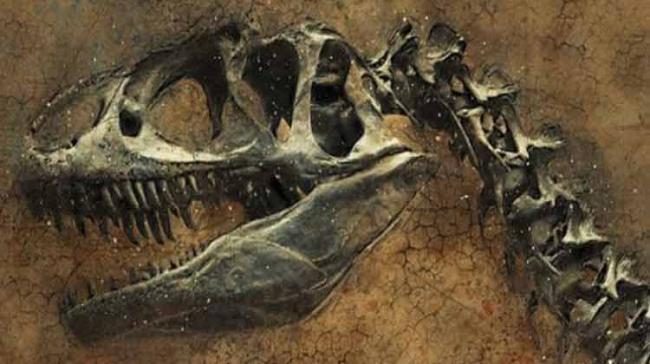Asteroid That Wiped Out Dinosaurs Cooled Earth, Finds Study

The Chicxulub asteroid impact - that wiped out the dinosaurs 66 million years ago - likely released climate-altering sulphur and cooled the Earth far more than originally thought, a study has found.
The research makes a more refined estimate of how much sulphur and carbon dioxide gas were ejected into Earths atmosphere from vaporised rocks immediately after the Chicxulub event.
Scientists estimate more than three times as much sulfur may have entered the air compared to what previous models assumed, implying the ensuing period of cool weather may have been colder than previously thought.
The study lends support to the hypothesis that the impact played a significant role in the Cretaceous-Paleogene extinction event that eradicated nearly three-quarters of Earths plant and animal species, according to Joanna Morgan, from the Imperial College London in the UK.
"Many climate models cant currently capture all of the consequences of the Chicxulub impact due to uncertainty in how much gas was initially released," Morgan said.
"We wanted to revisit this significant event and refine our collision model to better capture its immediate effects on the atmosphere," she said.
The Chicxulub impact occurred 66 million years ago when an asteroid approximately 12 kilometers wide slammed into Earth. The collision took place near what is now the Yucatán peninsula in the Gulf of Mexico.
The asteroid is often cited as a potential cause of the Cretaceous-Paleogene extinction event, a mass extinction that erased up to 75 per cent of all plant and animal species, including the dinosaurs.
The asteroid collision had global consequences because it threw massive amounts of dust, sulfur and carbon dioxide into the atmosphere.
The dust and sulfur formed a cloud that reflected sunlight and dramatically reduced Earths temperature.
The study, published in the journal Geophysical Research Letters, showed that the Earths average surface air temperature may have dropped by as much as 26 degrees Celsius and that sub-freezing temperatures persisted for at least three years after the impact.
Scientists simulated the pressure of the shock waves created by the impact to estimate the amounts of gases released in different impact scenarios.
They changed variables such as the angle of the impact and the composition of the vaporized rocks to reduce the uncertainty of their calculations.
The results show the impact likely released about 325 gigatonnes of sulphur and 425 gigatonnes of carbon dioxide into the atmosphere, more than 10 times global human emissions of carbon dioxide in 2014.
Previous study that modelled Earths climate after the collision had assumed 100 gigatonnes of sulphur and 1,400 gigatonnes of carbon dioxide were ejected as a result of the impact.




